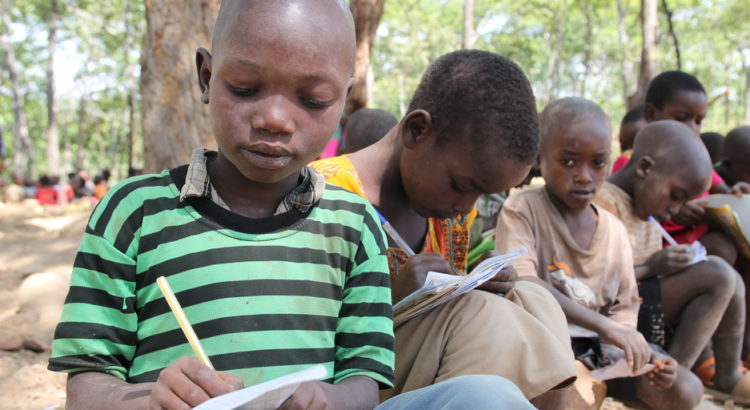Africa/Septiembre de 2017/Fuente: Norwegian Refugee Council
Resumen: Decidimos huir de Burundi porque había guerra. Echo de menos la escuela donde estaba estudiando en Burundi. Tenía suficientes materiales: zapatos y ropa, bolígrafos, goma de borrar y una bolsa de escuela «, dice Nyongere, de diez años, en el campamento de refugiados de Nduta, en Tanzania. Pero este año no tiene escuela para asistir. Con la guerra y la sequía golpeando a varios países del este de África, millones de niños como Nyongere que huyeron de sus hogares están abarrotados en los campamentos con pocas escuelas, y poca oportunidad para una educación. La falta de educación para los niños desplazados podría crear una generación perdida», dice Gabriella Waaijman, Directora Regional del Consejo Noruego para los Refugiados. «Mañana es el Día Internacional de la Alfabetización, y los niños tienen derecho a ir a la escuela. La educación puede salvar la vida de los niños durante las emergencias. Las escuelas proporcionan a los niños un lugar seguro, construyen estructuras sociales protectoras, enseñan conocimientos esenciales para la supervivencia y salvaguardan el futuro de los niños y las comunidades.
“We decided to flee Burundi because there was war. I miss the school where I was studying in Burundi. I had enough materials: shoes and clothes, pens, eraser and a school bag,” says ten-year-old Nyongere at Nduta refugee camp in Tanzania. But this year he has no school to attend.
With war and drought hitting several East African countries, millions of children like Nyongere that fled their homes are crammed into camps with few schools, and little chance for an education.
“The lack of education for displaced children could create a lost generation,” says Gabriella Waaijman, Regional Director for the Norwegian Refugee Council. “Tomorrow is International Literacy Day, and children have the right to go to school. Education can save children’s lives during emergencies. Schools provide children a secure location, they build protective social structures, they teach essential knowledge for survival, and they safeguard the futures of children and communities.”
Many children remain stuck in refugee camps for years, wishing that they could go to school. In the Kigoma district camps in Tanzania, some classes are held under trees, and the number of students in each class can be as high as 200. About half of 318,000 Burundian and Congolese refugees in Tanzania living in refugee camps are children. Only 65 percent of primary, and three percent of secondary students are in school.
In South Sudan 2.2 million children are out of school due to conflict in several regions. The country has the highest proportion of children out of school globally, with over 70% of children not getting an education. Over one third of all schools have been damaged or destroyed during the conflict.
In Somalia, over two decades of conflict meant that access to basic education was among the world’s lowest. This was worsened by the current drought which caused 766,000 people to flee their homes, imperilling the little but hard-won progress in education. 1.7 million children of school age are not in school, and 30 percent of children complete four years of schooling without learning basic elementary skills.
In Uganda, there are now over one million refugees from South Sudan, and more than half are children. 40% of 6-13 year olds are not enrolled in primary school; and 80% of secondary school-aged young people are not enrolled in secondary education. Each teacher has up to 128 children in their class.
In Kenya, 588,000 school age children need emergency education assistance due to the drought crisis. Over 1,200 schools do not have access to safe drinking water. Only seven percent of funding needs for emergency education have been met.
With the East African drought crisis, education receives far less funding than other emergency programmes. Out of the $970 million in funding committed to the drought crisis in Ethiopia, Kenya, and Somalia, only $16.5 million is for education projects, only 1.7 percent of total funds. Education funding for other crises in the region is also far below the need. The international aid community agreed in 2015 that four percent of humanitarian aid should go to education, but that target has not been reached for any country in the region. Among areas of humanitarian need, education is funded the least. This leaves a huge funding shortfall.
Education is lifesaving for displaced children. School attendance can keep children from joining armed groups. Lifesaving awareness on landmines and unexploded bombs can be taught in school. Without hygiene knowledge that children can learn in school, some refugee children can die of disease. Schools for refugees often provide lunches, reducing child malnutrition and vulnerability to disease.
“Everyone agrees on the importance of education, especially for children affected by conflict. Therefore, it is incomprehensible and unjustifiable that so little funding is provided for education for children in emergencies,” said Waaijman.
With more children fleeing their homes and with little humanitarian funding for schools, East Africa faces an education crisis. The Norwegian Refugee Council calls on the international community and donors to live up to commitments they made previously, asking them to ensure that education plays its role in alleviating humanitarian crises. More funding should be committed for the education response for the multiple crises in East Africa.
Fuente: https://www.nrc.no/news/2017/millions-of-children-miss-school-due-to-war-and-drought-in-east-africa/







 Users Today : 7
Users Today : 7 Total Users : 35460390
Total Users : 35460390 Views Today : 15
Views Today : 15 Total views : 3419178
Total views : 3419178